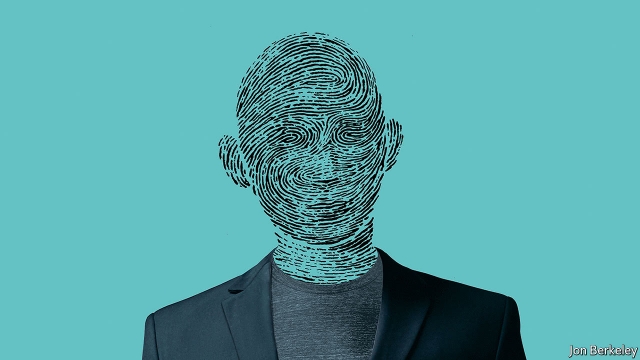When speaking of AI, we probably think of finding patterns in large data sets such as Google and Facebook are already doing it. Nevertheless, this construction of patterns can also be applied to faces, more precisely “research at Stanford University […] has shown that machine vision can infer sexual orientation by analysing people’s faces” (The Economist, 2017a). So, before you start hiding your faces and come to class wearing masks, let me briefly explain how they did it and what it means.
Research Approach
Primary, the two researchers collected face images and information of public profiles of an American dating website, evenly representing gay, straight, male and female users. Afterwards, those images were inserted into a “software called VGG-Face” (The Economist, 2017a) which converts the face images into actual, numeric data. Finally, the researchers applied a predictive model (logistic regression) to analyze the correlation of the face data and the sexuality (as stated on the dating site). The result: “when shown five photos of each man, it attributed sexuality correctly 91% of the time” (The Economist, 2017a). Overall, this algorithm assigns sexuality correctly 81% of the time, compared to humans being correct 61%.
Meaning
Although dating profile images represent a “special” kind of picture, these findings have some crucial implications. The primary goal of the researchers was to show that it is possible to set up a software recognizing sexuality based on face structures. Moreover, they did not apply specialized new technologies or techniques but rather proved that it’s possible to determine based on current technologies (relatively accurately) one of the most intimate characteristics of humans, namely sexual orientation.
Given the rise of facial recognition technologies (e.g., iPhone X), the acceptance of consumers will probably increase (The Economist, 2017b). Although there are several advantages of using such technologies, such as creating the bridge between online and offline shopping behavior (e.g., identifying the non-purchasing customers in the offline store & target online ads after the customer leaves the offline store), there are also disadvantages associated with it. Especially related to politics, facial recognition could identify political “opponents” (e.g., during a political strike) and punish them. Personally, I think that the acceptance curve of facial recognition technologies will behave in the same way as fingerprint scanners (yes the one you currently use to unlock your phone) did. As long as the overall benefits (such as convenience) outweigh the cost of privacy, we will start and continue using it.
But do you see the problem here? If so, how should we “face” that problem? ?
Sources
The Economist. (2017a). Advances in AI are used to spot signs of sexuality. Retrieved 27 September 2017, from https://www.economist.com/news/science-and-technology/21728614-machines-read-faces-are-coming-advances-ai-are-used-spot-signs
The Economist. (2017b). Ever better and cheaper, face-recognition technology is spreading. Retrieved 27 September 2017, from https://www.economist.com/news/business/21728654-chinas-megvii-has-used-government-collected-data-lead-sector-ever-better-and-cheaper


Interesting post Martin. I think it would be quite troubling if facial recognition would be used to guess the orientation of an individual. Especially if these tools were to be used in countries where homosexuality isnt accepted. By using AI to guess orientation, an individual may be at a disadvantage by being classified as ‘likely to be gay’ or the other way around, which could negatively impact other aspects of his/her life. Besides this point, you raise some other interesting points and examples in the article, whereby facial recognition is used more and more. I agree and think the uses of facial recognition will only increase as imaging technology improves.